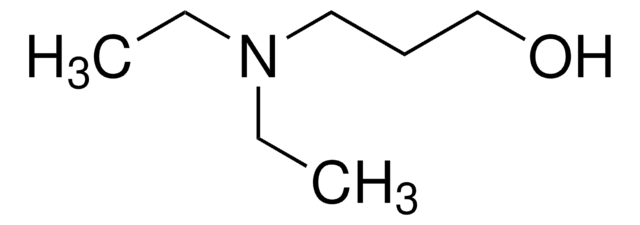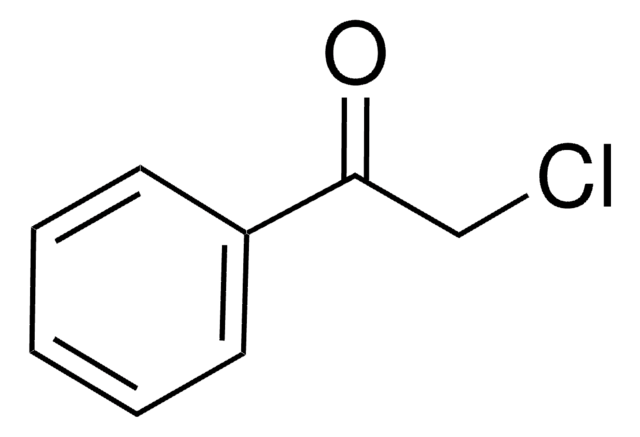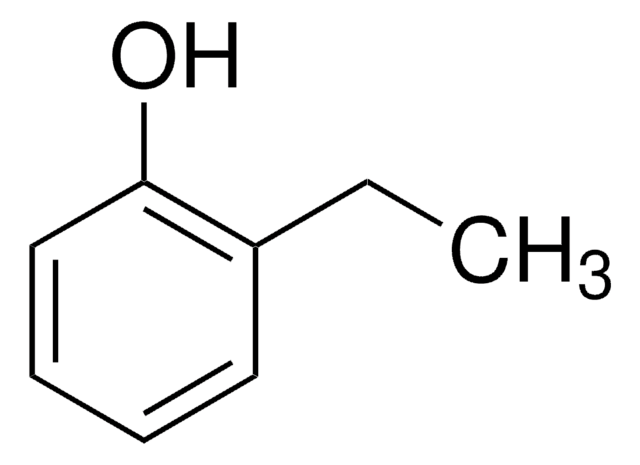추천 제품
Quality Level
분석
99%
bp
196 °C (lit.)
mp
46-48 °C (lit.)
density
1.215 g/mL at 25 °C (lit.)
SMILES string
Cc1ccc(Cl)c(O)c1
InChI
1S/C7H7ClO/c1-5-2-3-6(8)7(9)4-5/h2-4,9H,1H3
InChI key
SMFHPCZZAAMJJO-UHFFFAOYSA-N
일반 설명
Sonochemical degradation of 2-chloro-5methyl phenol in aqueous solution in the presence of TiO2 and H2O2 has been reported.
애플리케이션
2-Chloro-5-methylphenol was used in the synthesis of 2-(4-chlorophenyl)-2-(4-chloro-3-thiophenol)-1,1-dichloroethene.
신호어
Danger
유해 및 위험 성명서
Hazard Classifications
Acute Tox. 4 Oral - Aquatic Acute 1 - Aquatic Chronic 3 - Eye Dam. 1 - Skin Corr. 1C - Skin Sens. 1B - STOT SE 3
표적 기관
Respiratory system
Storage Class Code
6.1A - Combustible acute toxic Cat. 1 and 2 / very toxic hazardous materials
WGK
WGK 3
Flash Point (°F)
177.8 °F - closed cup
Flash Point (°C)
81 °C - closed cup
개인 보호 장비
dust mask type N95 (US), Eyeshields, Gloves
시험 성적서(COA)
제품의 로트/배치 번호를 입력하여 시험 성적서(COA)을 검색하십시오. 로트 및 배치 번호는 제품 라벨에 있는 ‘로트’ 또는 ‘배치’라는 용어 뒤에서 찾을 수 있습니다.
T Cantillana et al.
Chemosphere, 76(6), 805-810 (2009-05-19)
For the first time, a pathway for synthesis of 2-(4-chlorophenyl)-2-(4-chloro-3-thiophenol)-1,1-dichloroethene (3-SH-DDE), is presented. The compound is of particular interest as a precursor for synthesis of alkylsulfonyl-DDE containing different alkyl groups to discover structural activity relationships, and to promote synthesis of
P Nalini Vijaya Laxmi et al.
Journal of hazardous materials, 174(1-3), 151-155 (2009-10-06)
The degradation of 2chloro-5methyl phenol (2C-5MP) in aqueous solution by ultrasonication (US) in the presence of TiO(2) and H(2)O(2) has been studied. Maximum degradation rate of 2.66 x 10(-2) was achieved by US/TiO(2)/H(2)O(2) process when compared to US/TiO(2) (1.01 x
자사의 과학자팀은 생명 과학, 재료 과학, 화학 합성, 크로마토그래피, 분석 및 기타 많은 영역을 포함한 모든 과학 분야에 경험이 있습니다..
고객지원팀으로 연락바랍니다.











